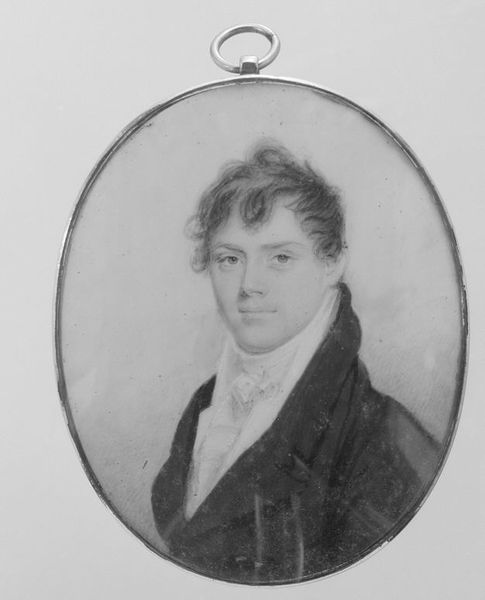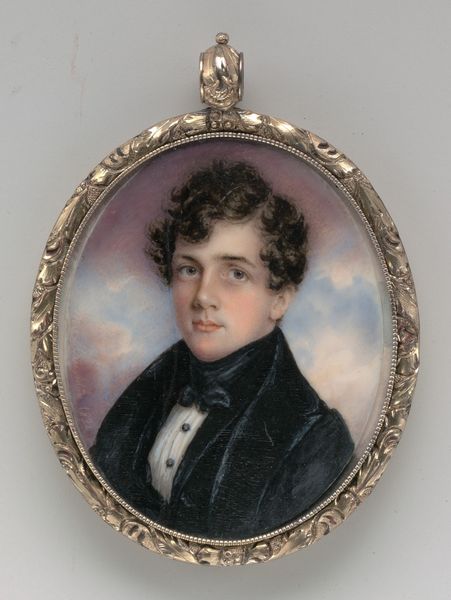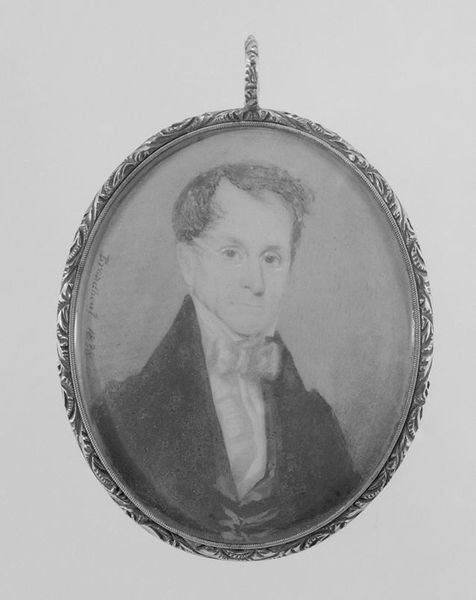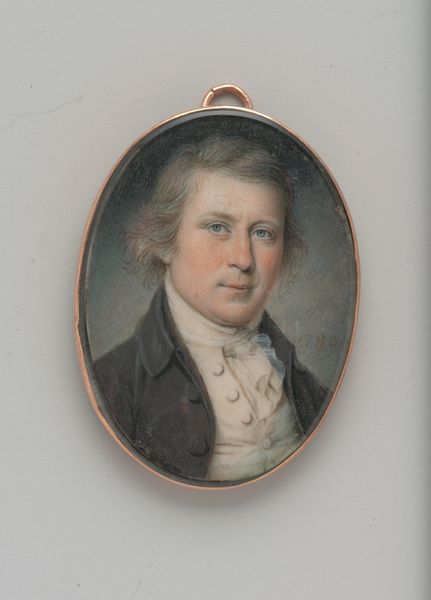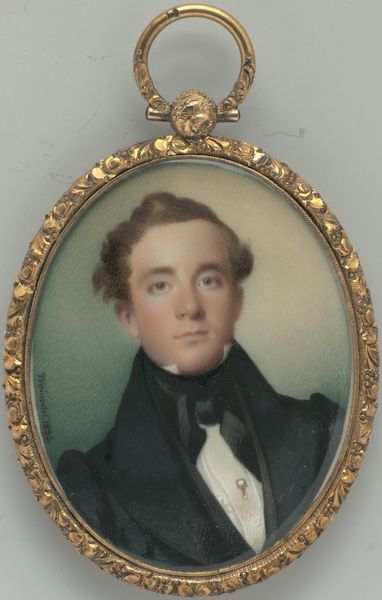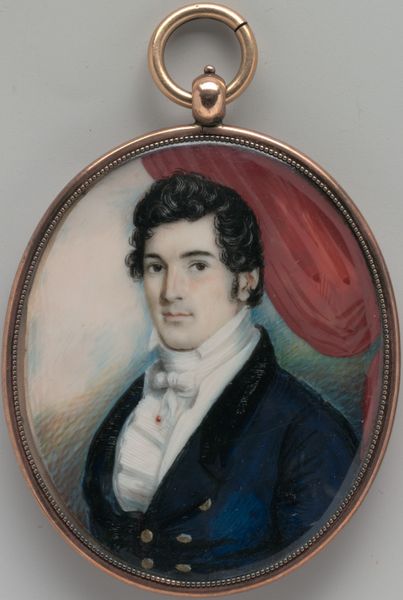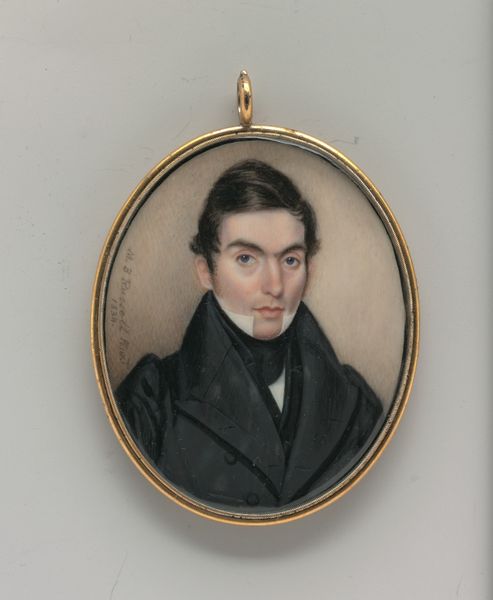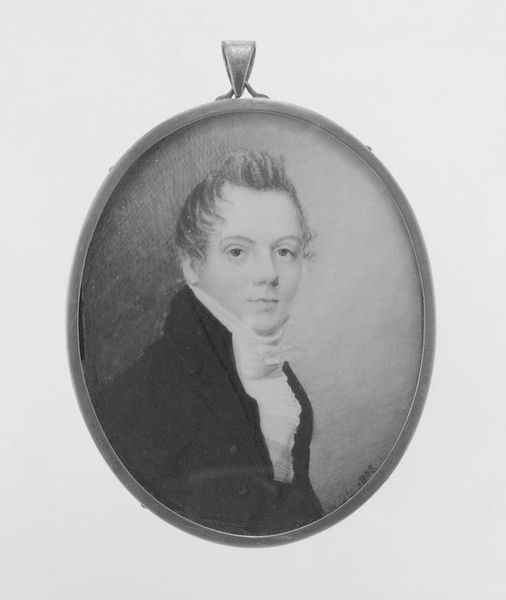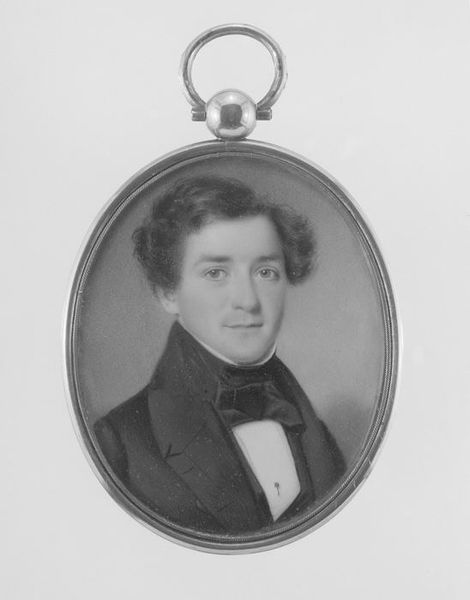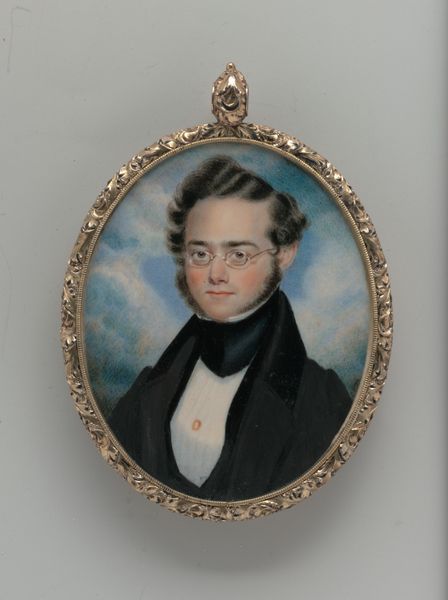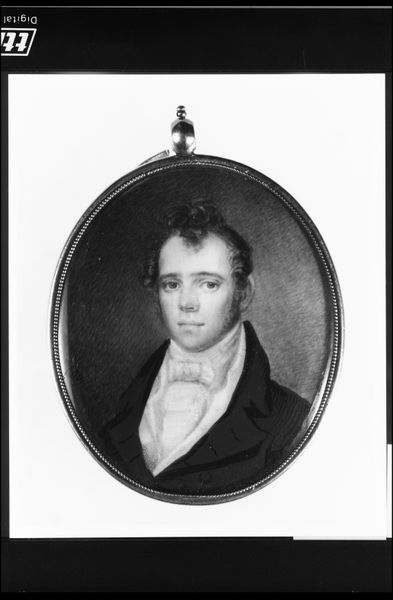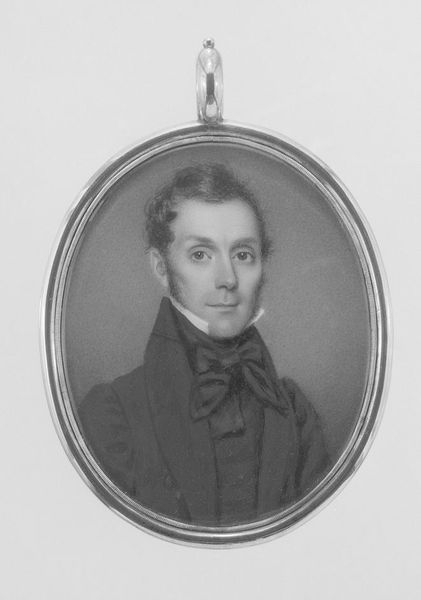
painting, oil-paint
#
portrait
#
self-portrait
#
painting
#
oil-paint
#
sculpture
#
figuration
#
historical fashion
#
men
#
miniature
Dimensions: 1 15/16 x 1 9/16 in. (4.9 x 4 cm)
Copyright: Public Domain
Curator: We’re looking at a miniature portrait attributed to James Van Dyck, titled "Self Portrait." The museum dates it to around 1834 to 1836. It's oil on ivory and held within a decorative gold frame. Editor: My first impression is one of understated elegance. The oval format, the rich tones against the cool, smooth ivory—it has a jewel-like quality. There's a certain melancholy too, despite the direct gaze. Curator: The composition certainly lends itself to that impression. The restricted palette of browns and blacks focuses our attention on the face, creating a sense of intimacy despite the subject’s somewhat formal attire. Observe the subtle gradations in tone and texture achieved through the layering of oil paint. Editor: The attire is key here. The high collar, dark jacket, and the hint of a cravat speak of a very particular social standing and time. These men were often symbols of propriety. The face is the key element to decipher: It invites a dialogue about beauty ideals. And perhaps it is Van Dyck's way of asserting a self-image within a set of expectations. Curator: Precisely. The restricted range in the coloration of garments serves to enhance the luminosity of the face. A face which itself utilizes a great degree of tonal modulation to depict the fullness of cheeks and highlight structure of brow, nose, and upper lip. It has a structural integrity. Editor: Though it’s “Self Portrait,” it conforms so rigidly to conventions that I wonder what it reveals about his interior life. Isn't it telling how much effort went into the presentation? Perhaps it is more of an exercise in symbolism than genuine self-revelation. Curator: It seems plausible. In terms of visual artistry, there are multiple sophisticated compositional methods working together, it is an intriguing technical exercise regardless. Editor: The use of symbolic clothing reinforces what the eyes already betray – that balance of presence, social code, and deep individual identity – and the enduring quest of humanity reflected back through art. Curator: Yes, this work utilizes both structure and culturally inscribed image with adroit efficiency. Editor: It is compelling indeed to observe art forms as historical artifacts that speak to who we were, as well as who we are now.
Comments
No comments
Be the first to comment and join the conversation on the ultimate creative platform.

